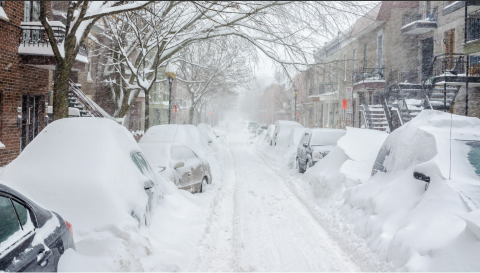
When it snows, skiers ski, even amid calamity. That could change with Covid-19. By Andy Bigford
Skiers and the industry have confronted and overcome a variety of disasters—wars, gas shortages, recessions, and terrorism—none of which affected the sport more than the biggest annual influencer of all: the weather. This disaster is different. The novel coronavirus already has trimmed one-sixth of the prematurely closed 2019-20 season, an estimated 8 million skier days and $2 billion in revenue, according to the National Ski Areas Association (NSAA). Travel concerns, social distancing constraints, and the cratering economy could take a much bigger bite out of the upcoming 2020-21 season. Or not.
Just prior to the modern skiing age, World War II was the obvious exception to the weather rule. Many of the 60 or so “ski areas” operating in the U.S. closed during the conflict, as did countless community rope-tow hills, with resort improvements coming to a standstill.
Stowe stayed open. With gas rationing in force, skiers commuted by train and bus, but the lifts spun just six hours a day. The sport supported the war effort in other ways. Stowe skier C. Minot “Minnie” Dole, who founded the National Ski Patrol in 1938, persuaded the U.S. State Department to create the 10th Mountain Division ski troops. At the 10th’s headquarters at Camp Hale in Leadville, Colorado, Ski Cooper was created and then opened to the public after the war...
